Bringing home a new puppy is exciting—but also a little like toddler-proofing your house for a furry, four-legged explorer. Puppies love to chew, dig, sniff, and squeeze into places they shouldn’t. At Hodes Veterinary Health Center, we help new pet parents navigate this joyful chaos with calm, clear advice. Puppyproofing your home keeps your new companion safe, happy, and on track for a healthy start.
Let’s explore the essential steps, hidden hazards, and vet-approved tricks to prep your house before those little paws hit the floor.
Why Puppyproofing Matters
Puppies are naturally curious and lack the life experience to avoid danger. They learn about the world through taste, scent, and trial-and-error—usually your shoes, carpet, and electrical cords.
Effective puppyproofing helps prevent:
- Choking or swallowing hazards
- Electrical burns or shocks
- Toxic exposure (plants, meds, chemicals)
- Escape or injury
- Destructive chewing and behavioral issues
It also protects your furniture, rugs, baseboards, and your sanity during teething and training!
How to Puppyproof Your House: Room by Room
Living Room
- Secure cords and cables with cord covers or keep them out of reach.
- Pick up small objects like coins, buttons, batteries, and jewelry.
- Block off fireplaces and unstable furniture.
- Check under furniture—puppies may wedge themselves into tight spaces.
Kitchen
- Use childproof latches on cabinets and trash cans.
- Keep food off counters—many common foods are toxic (chocolate, grapes, onions).
- Unplug appliances when not in use and tuck cords away.
- Store cleaning products and sharp utensils securely.
Bathroom
- Close toilet lids—yes, some puppies try to drink from it.
- Store medications in high cabinets.
- Keep razors, floss, and small bottles out of reach.
- Use non-slip mats to prevent injury on tile floors.
Bedroom
- Keep shoes and socks in closets.
- Tuck away laundry and loose cords.
- Block off access under beds if your puppy hides or chews in there.
- Watch out for cosmetics, essential oils, and lotions—some can be harmful.
Garage & Outdoors
- Store all chemicals, such as antifreeze, fertilizers, and paints, in cabinets or on high shelves—these are often fatal if ingested.
- Fence your yard securely and check for gaps.
- Avoid toxic plants like lilies, azaleas, and sago palms.
- Remove sticks, mulch, and sharp objects from your puppy’s play area.
Puppy Hazards in the Home: What to Look Out For
Even the most careful home has hidden dangers. Watch for:
- Plastic bags and wrappers – choking hazards
- Pillows and stuffed animals – can be shredded and swallowed
- Candles and diffusers – knock-over risk + scent sensitivity
- Shoelaces, drawstrings, curtain cords – entanglement risk
- Open windows or screens – small puppies can squeeze through
- Carpet tacks or loose nails – painful for exploring paws
If it’s small, sharp, chewable, or smells interesting—it’s fair game in your pup’s mind!
New Puppy Safety Checklist
Here’s a quick guide to get you started:
- Puppy-safe chew toys
- Baby gates or playpen
- Non-slip mats for tile/wood floors
- Latchable trash can
- Crate or designated safe space
- Fence checked and reinforced
- Toxic plants removed or relocated
- Vet-approved flea/tick prevention
- Emergency contact and local vet info posted
FAQs About Puppyproofing
When should I start puppyproofing?
Before your puppy comes home! Have the space ready to minimize early accidents and stress.
How long do I need to keep my house puppyproofed?
Expect full puppyproofing for 6–12 months, depending on breed and behavior. Some curious pups need longer supervision.
Do I need a crate?
Yes—crate training provides a safe space for your pup and prevents nighttime or unsupervised mischief.
What’s the best way to discourage chewing?
Offer chew-safe toys and rotate them often. Praise chewing on appropriate items and redirect from furniture with a firm “no” followed by redirection.
How often should I inspect my home for hazards?
Do a weekly scan of your home and yard during puppyhood, especially as your pup grows and gains access to new areas.
Start Your Puppy’s Life Safely at Hodes Veterinary Health Center
At Hodes Veterinary Health Center, we love helping new puppy parents feel confident and supported. Puppyproofing your home is the first step to a long, happy, and healthy relationship with your canine companion.
Need help setting up for your pup’s arrival? Schedule a new puppy exam today and let’s talk safety, training, vaccinations, and more.
Looking for a “vet near me” to support your puppy’s first year? Hodes Veterinary Health Center is here to guide you every step of the way.
This post is for educational purposes only and does not replace veterinary guidance. Always consult your veterinarian regarding your pet’s environment and care.
